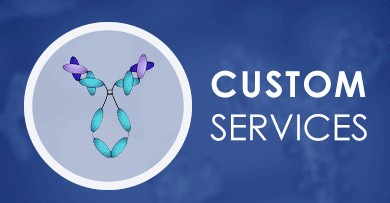+ Filter
 Loading...
Loading...

ATG3
 Loading...
Loading...Anti-ATG3 Products
- Rabbit Anti-ATG3 Recombinant Antibody (clone JU00-35) (MRO-0108-CN)
-
- Species Reactivity: Human, Mouse, Rat
- Type: Rabbit IgG
- Application: WB, IHC
- Rabbit Anti-ATG3 Polyclonal Antibody (MRO-1653-CN) (MRO-1653-CN)
-
- Species Reactivity: Human, Mouse
- Type: Rabbit IgG
- Application: WB, IHC
-
- Species Reactivity: Human, Mouse, Rat
- Type: Rabbit IgG
- Application: WB, IHC-F, IHC-P, ICC, IF
-
- Derivation: Mouse
- Species Reactivity: Human, Mouse
- Type: Mouse IgG1
- Application: WB, IHC
-
- Species Reactivity: Human
- Type: Mouse IgG2b
- Application: WB
- Mouse Anti-NHP ATG3 Recombinant Antibody (clone 7A1D1) (VS-1024-XY35)
-
- Species Reactivity: Human, Non-human primate
- Type: Mouse IgG1
- Application: WB, IHC, ELISA
- Anti-ATG3 Immunohistochemistry Kit (VS-0525-XY586)
-
- Species Reactivity: Human
- Target: ATG3
- Application: IHC
- Anti-Mouse ATG3 Immunohistochemistry Kit (VS-0525-XY587)
-
- Species Reactivity: Human, Mouse, Rat, Canine, Monkey
- Target: ATG3
- Application: IHC
-
- Derivation: Mouse
- Species Reactivity: Human
- Type: Mouse IgG1
- Application: WB, IHC, ICC, FCM
- Anti-Rat ATG3 Immunohistochemistry Kit (VS-0525-XY588)
-
- Species Reactivity: Human, Mouse, Rat
- Target: ATG3
- Application: IHC
-
- Derivation: Phage display library screening
- Species Reactivity: Human
- Type: Rabbit IgG
- Application: WB, IHC, ICC
View More Products
Can't find the products you're looking for? Try to filter in the left sidebar.Filter By Tag
More Infomation
Our customer service representatives are available 24 hours a day, from Monday to Sunday. Contact Us
For Research Use Only. Not For Clinical Use.
Background
This gene encodes a ubiquitin-like-conjugating enzyme and is a component of ubiquitination-like systems involved in autophagy, the process of degradation, turnover and recycling of cytoplasmic constituents in eukaryotic cells. This protein is known to play a role in regulation of autophagy during cell death. A pseudogene of this gene is located on chromosome 20. Alternative splicing results in multiple transcript variants encoding different isoforms.
Protein class
Transporters
Predicted location
Intracellular
Single cell type specificity
Cell type enhanced (Early spermatids, Spermatocytes)
Immune cell specificity
Low immune cell specificity
Cell line specificity
Low cell line specificity
Interaction
Interacts with ATG7 and ATG12. The complex, composed of ATG3 and ATG7, plays a role in the conjugation of ATG12 to ATG5. Interacts with FNBP1L.
Molecular function
Transferase
More Types Infomation



